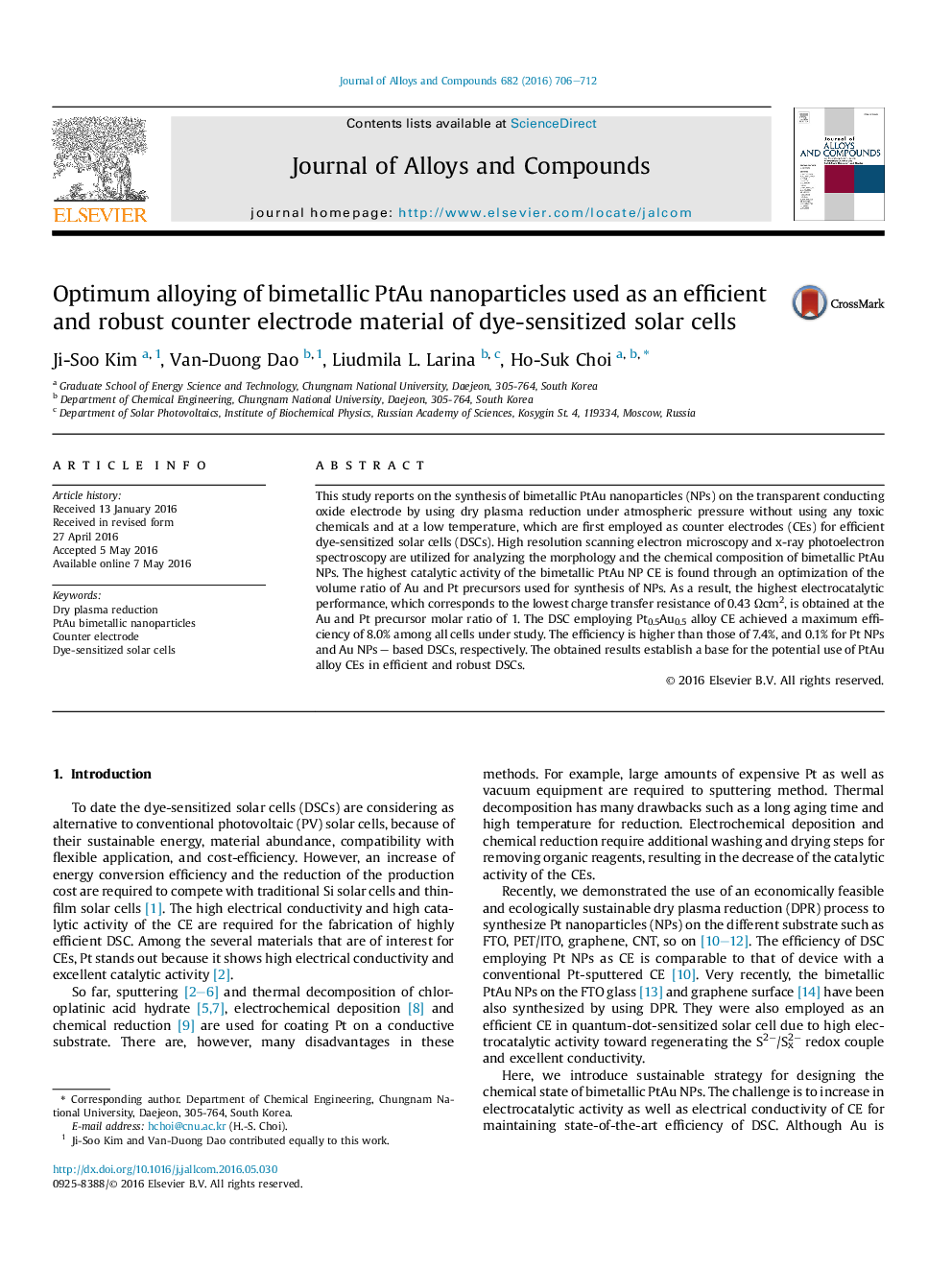| Article ID | Journal | Published Year | Pages | File Type |
|---|---|---|---|---|
| 7997315 | Journal of Alloys and Compounds | 2016 | 7 Pages |
Abstract
This study reports on the synthesis of bimetallic PtAu nanoparticles (NPs) on the transparent conducting oxide electrode by using dry plasma reduction under atmospheric pressure without using any toxic chemicals and at a low temperature, which are first employed as counter electrodes (CEs) for efficient dye-sensitized solar cells (DSCs). High resolution scanning electron microscopy and x-ray photoelectron spectroscopy are utilized for analyzing the morphology and the chemical composition of bimetallic PtAu NPs. The highest catalytic activity of the bimetallic PtAu NP CE is found through an optimization of the volume ratio of Au and Pt precursors used for synthesis of NPs. As a result, the highest electrocatalytic performance, which corresponds to the lowest charge transfer resistance of 0.43 Ωcm2, is obtained at the Au and Pt precursor molar ratio of 1. The DSC employing Pt0.5Au0.5 alloy CE achieved a maximum efficiency of 8.0% among all cells under study. The efficiency is higher than those of 7.4%, and 0.1% for Pt NPs and Au NPs - based DSCs, respectively. The obtained results establish a base for the potential use of PtAu alloy CEs in efficient and robust DSCs.
Related Topics
Physical Sciences and Engineering
Materials Science
Metals and Alloys
Authors
Ji-Soo Kim, Van-Duong Dao, Liudmila L. Larina, Ho-Suk Choi,
